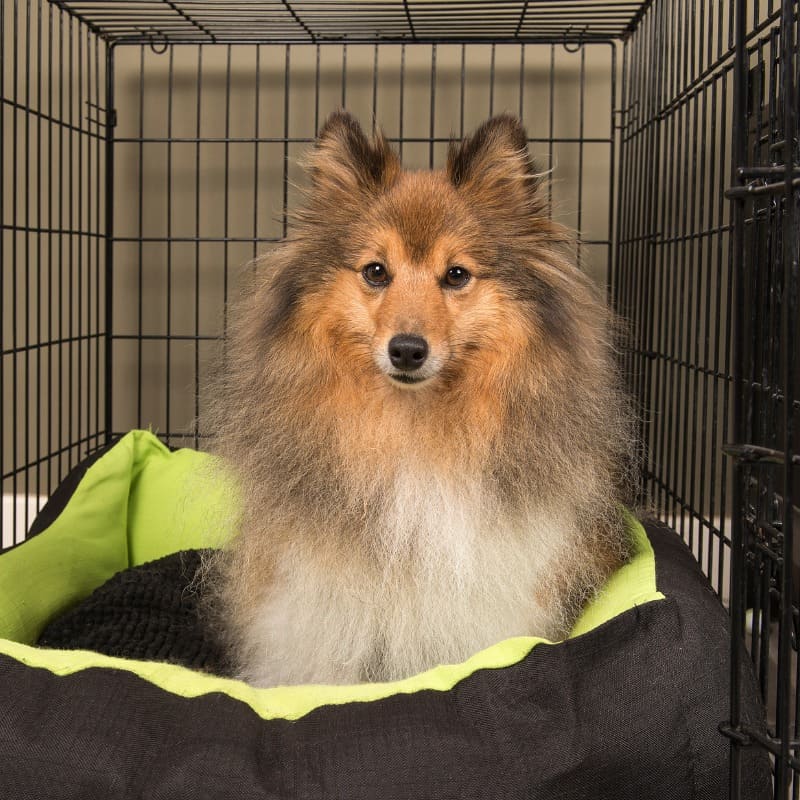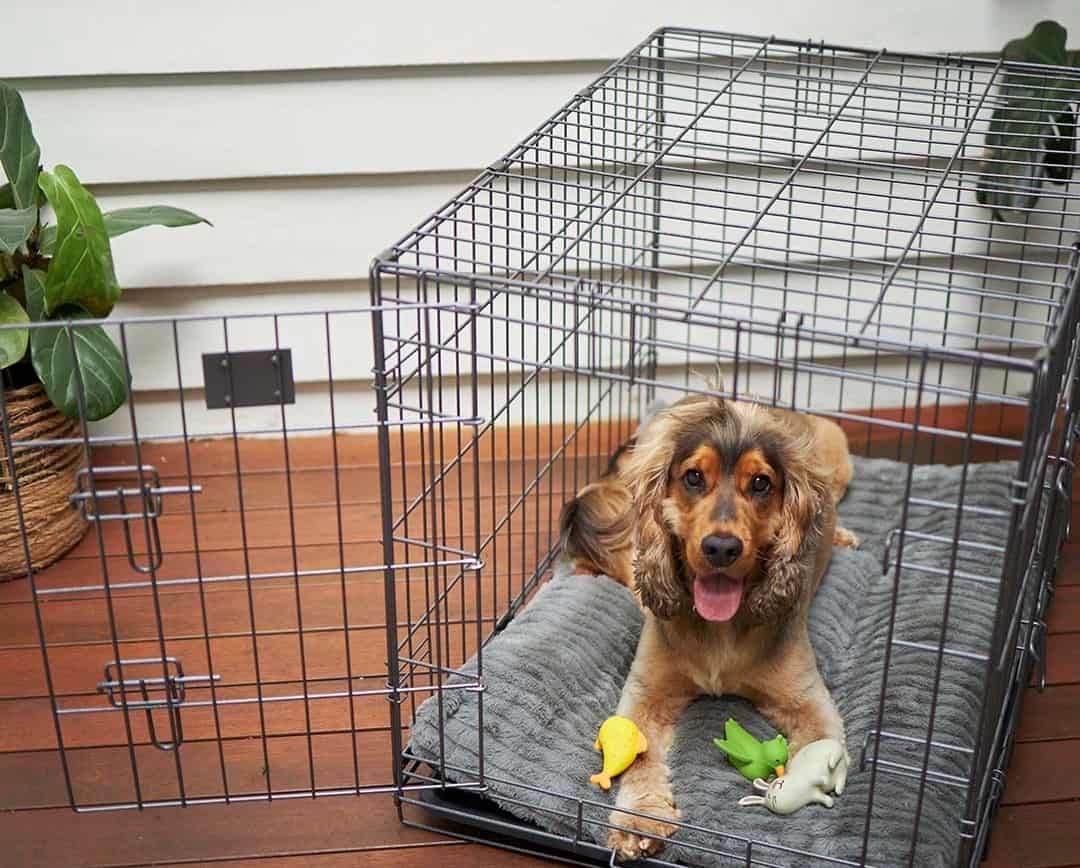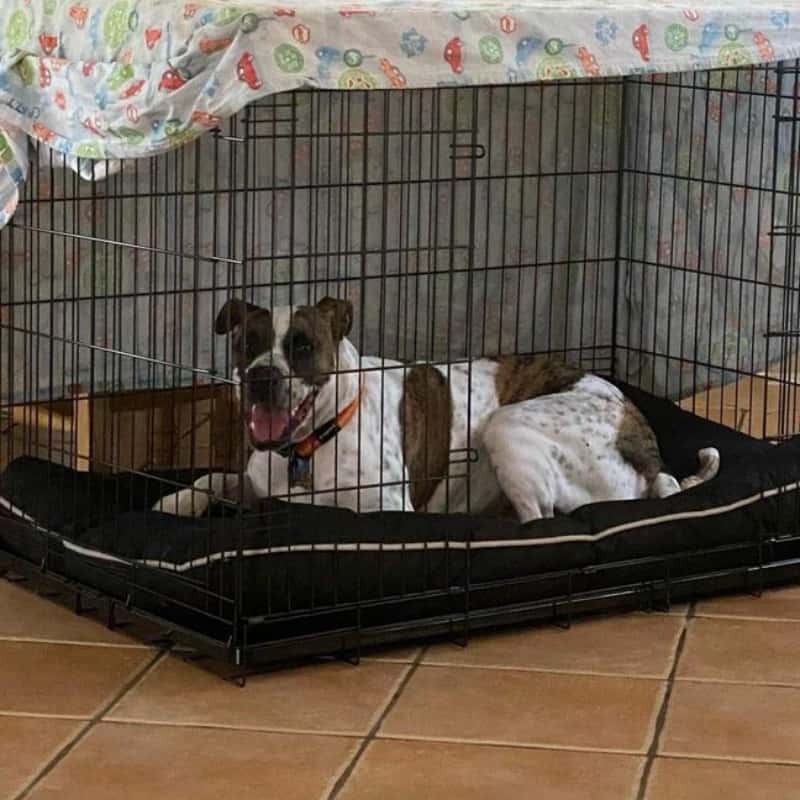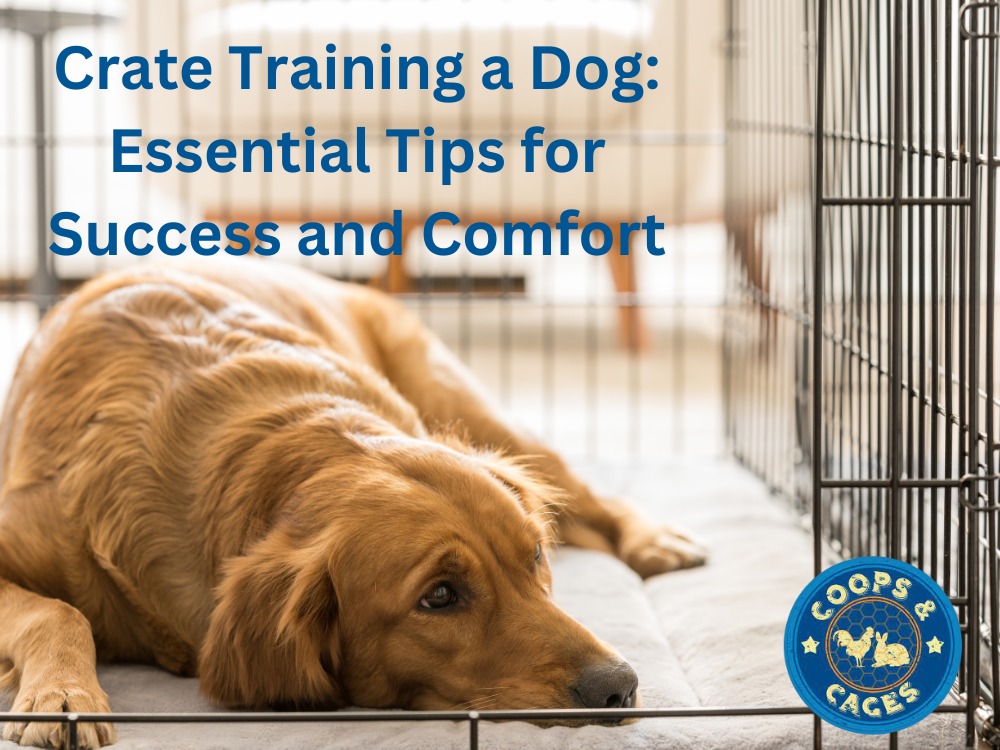Dogs, How To Do Things, Training
Crate Training a Dog: Essential Tips for Success and Comfort
Crate training a dog is an essential skill for both new and experienced pet owners, offering numerous benefits such as promoting a sense of security and aiding in house training.
In this comprehensive guide, we will delve into the various aspects of crate training to ensure your furry friend feels comfortable and safe in their personal space.
Throughout this post, you’ll learn how to create a positive association with the crate for both puppies and older dogs. We’ll look into the means of introducing your pup or adult dog to their crate and deciding on an appropriate size and style for them.
Additionally, we’ll explore techniques on gradually increasing crating while you’re at home, ensuring that your pet adapts at their own pace. Finally, our guide will provide useful strategies to make a successful experience for both dogs and dog owners.
By mastering these methods of dog crate training you’ll be well-equipped to foster a happy home environment where both owner and pet can thrive together harmoniously.
Benefits of Crate Training Your Puppy
Crate training your puppy offers numerous advantages for both you and your furry friend. One significant benefit is that it provides a safe and secure space for your pup to retreat when they need some quiet time or feel overwhelmed.
Bringing a new pup into the home can be made simpler by crate training, as it provides a safe and secure spot for them to go when feeling overwhelmed.
In addition, crate training helps with potty training as young puppies are less likely to soil their sleeping area. By establishing a consistent routine, you’ll find it easier to teach them where and when to do their business.
Furthermore, crates can also aid in preventing destructive behaviours such as chewing on furniture or shoes while you’re away from home.
- Safety: A comfortable crate serves as a safe haven for your pup.
- Housebreaking: Crates facilitate faster potty training progress.
- Destructive Behaviour Prevention: Limiting access to household items reduces unwanted chewing incidents.
A well-adjusted dog that has been properly crate trained will view their enclosure positively, making travel, vet visits, and other potentially stressful situations more manageable for both of you

Create a Positive Association with the Crate
Creating a positive association with the crate is essential for successful crate training. To achieve this, follow these simple steps:
- Make it comfortable: Add soft bedding or a crate mat along with your dog’s favourite toys to make the crate inviting and cosy.
- Treats and praise: To help with crate training, gradually introduce your dog to the concept by leaving the door of the open crate and placing treats inside, creating a positive association with the space. Reward your pup with treats and praise when they explore or enter their crate voluntarily. This will help them associate the crate with positive experiences.
- Crate during mealtime: Feed your dog in their crate to create a pleasant connection between food and their new space. Gradually move the food bowl further into the back of the crate.
- Calm environment: Place the crate in an area where your dog feels safe, away from loud noises or heavy foot traffic.
- Avoid punishment: Never use the crate as a punishment tool. Doing so will create a negative association with the crate and make it more difficult to train your dog or puppy.
Remember, patience is key in building a positive association with the crate for your furry friend. Staying patient and consistent with your training method is essential for achieving the benefits of having a tranquil, balanced pet.
Introduce Your Dog to the Crate
Introducing your dog to their new crate is a crucial step in successful crate training. To make this process smooth and stress-free, follow these simple steps:
- Create a comfortable environment: Place a soft blanket or bed inside the crate, along with some of your dog’s favourite toys. This will help them feel more at ease when they first explore their new space.
- Use treats as motivation: Encourage your pup to enter the crate by placing some delicious treats near and inside it. This positive reinforcement will create an association between the crate and rewards.
- Praise and reward: When your dog enters the crate voluntarily, praise them enthusiastically and offer additional treats. Repeat this process several times throughout the day until they’re comfortable entering on their own.
- Incorporate mealtime: Start feeding your pup meals inside their crate so that they associate it with pleasant experiences like eating.
To ensure you have chosen an appropriate size for your pet’s needs, check out our range of crates available at Coops and Cages for both puppies and older dogs:
Introducing a crate to your pup or adult canine can be an efficient training technique for housebreaking, toilet teaching, and supplying a secure area for your furry friend. It’s important to introduce the crate at your dog’s pace and to make it a positive experience.
Once your pup is familiar with the crate, you can start to shut it for brief spans while you’re present. Once they’re comfortable being with having the crate door open, you can start closing the door for short periods of time while you’re home to transition them to being comfortable in a closed crate.
Eventually, you can work up to leaving your dog crated overnight or while you’re away from home.
For busy dog owners, hiring a dog walker to provide your pup with mid-day relief from the crate is recommended. This will help prevent accidents and keep your dog happy and healthy.
At Coops and Cages, we offer a variety of crate mats and beds to make your dog’s crate as comfortable as possible. Shop our selection today and give your furry friend the perfect dog home.
Get the Right Crate
Finding the perfect crate for your pup is essential to successful crate training. To ensure a comfortable and secure environment, consider these factors when choosing a crate:
- Size: Your dog should have enough space to stand up, turn around, and lie down comfortably. However, avoid crates that are too large as they may encourage your pup to use one end as their bathroom.
- Type: There are various types of crates available such as wire, plastic or fabric. Choose the crate that best suits your needs considering its durability, ventilation and visibility.
- Durability: Opt for a sturdy material that can withstand wear-and-tear from daily use.
- Ventilation & Visibility: Good airflow is crucial for your pet’s comfort, while visibility helps them feel less isolated during training sessions.
In addition to selecting the right crate size and type, you may want to invest in accessories such as bedding or toys, which will make it more inviting for your furry friend. Remember: creating a positive association with their new dog home is key.
Crate Sizing Guide
Somerzby Dog Crates come in 5 different sizes:
| Size | Length | Width | Height |
| Small 24” Crate | 60cm | 44cm | 51cm |
| Medium 30” Crate | 76cm | 47cm | 57cm |
| Large 36” Crate | 92cm | 58cm | 65cm |
| XL 42” Crate | 106cm | 70cm | 78cm |
| XXL 48” Crate | 122cm | 75cm | 83cm |

Which Crate Size For My Dog?
The following crate sizes are usually recommended for these breeds. It is important to still measure your dog before determining the appropriate crate as each individual dog is different.
- Small 24 Inch Crate – Chihuahua, Toy Poodle, Yorkshire Terrier.
- Medium 30 Inch Crate – French Bulldog, Maltese Terrier, Jack Russell.
- Large 36 Inch Crate – Beagle, Cavalier King Charles Spaniel, Cocker Spaniel.
- XL 42 Inch Crate – Border Collie, Siberian Husky, Labrador.
- XXL 48 Inch Crate – Bullmastiff, German Shepherd, Boxer.
Crate Training Your Dog: Tips for Success
Crate training can be an effective way to ensure your pet’s safety, comfort, and overall well-being if you’re a dedicated owner.
Whether you’re a first-time pet owner or an experienced animal enthusiast, Coops and Cages is a reliable and trusted source of pet enclosures.
Crate for Longer Periods While You’re Home
Gradually increasing the amount of time your pup spends in their crate while you’re home is crucial to successful crate training. This process helps them feel comfortable and secure, reducing anxiety when they are left alone.
- Start with short intervals: Begin by crating your dog for a few minutes at a time, gradually increasing the duration as they become more comfortable.
- Incorporate distractions: To help your pup adjust to being in their crate while you’re home, try watching TV or working on a task nearby so that they can get used to background noise and activity.
- Reward good behaviour: Praise and reward your dog with treats when they remain calm and quiet in their crate during these longer periods.
- Avoid creating negative associations: Be sure not to use the crate as punishment or force them inside if they seem anxious or resistant. Instead, continue reinforcing positive experiences with the space.
If you need guidance on selecting an appropriate-sized crate for your furry friend, check out our range of crates available: 24″ Small Dog Crate, 30″ Dog Crate, 36″ Dog Crate, and 48″ Extra-Extra Large Dog Crate.
A crate should be sufficiently ample to let your pup stand, turn and rest with ease.

Step-by-Step Guide to Crate Training Your Dog or Puppy
Follow these steps to successfully crate train your dog or puppy:
- Select the Right Crate Size: Choose a crate that is large enough for your pet to stand up, turn around, and lie down comfortably.
- Create Positive Associations with the Crate: Encourage your pup to explore their new space by placing treats, toys, and comfortable bedding inside.
- Familiarize Them with the Door Mechanism: Begin closing the door briefly while they are inside to allow them to adjust to a closed crate, but stay nearby so they don’t feel abandoned.
- Increase Time Spent in the Crate Gradually: As your pup becomes more comfortable in their enclosure, start leaving them alone for longer periods while you’re home.
- Crate Training at Night: Place their bed inside and encourage them to sleep there overnight. It’s okay if they cry initially; be patient as they adjust.
Be aware that adjusting to crate training may take varying amounts of time, ranging from a few days to several weeks. Stay consistent with your training method throughout the process and go at your dog’s pace.
FAQs in Relation to Crate Training a Dog
Is Crate Training Recommended for Dogs?
Yes, crate training is highly recommended for both puppies and adult dogs as it provides them with a safe and comfortable space to rest.
It also helps in housebreaking, reducing separation anxiety, and preventing destructive behaviour. Crate training should be done gradually and positively to ensure the dog’s well-being.
Is Crate Training a Dog Ethical?
Crate training is ethical when done correctly and responsibly. It promotes safety, comfort, and security for your pet while establishing boundaries within your home.
However, using crates as punishment or confining pets for extended periods without proper exercise can lead to physical and mental health issues.
What Are the Pros and Cons of Crate Training?
- Pros: Provides a safe haven; aids in house training; reduces separation anxiety; prevents destructive behaviour; eases travel.
- Cons: Can cause stress if not introduced properly; potential misuse leading to confinement-related issues; requires time investment from owners.
How Do You Break a Dog from Crate Training?
To transition away from crate use: Gradually increase their freedom by leaving doors open during supervised times at home. Encourage independent resting areas like beds or mats outside the crate.
Monitor their behaviour closely during this process to ensure they’re adapting well without displaying negative behaviours such as destruction or accidents indoors.
Jordan’s Wrap
Overall, crate training your puppy can provide numerous benefits such as creating a safe and comfortable space for them to retreat to, aiding in house training, and promoting good behaviour. It’s important to create a positive association with the crate by introducing it gradually and ensuring that it is the right size for your dog.
When you’re home, try crating your dog for longer periods of time so they get used to being inside without feeling anxious or stressed. Follow our step-by-step guide to ensure success in crate training your furry friend!
If you want to give your pet the best possible outdoor living space, check out Coops and Cages! We offer reliable and trusted sources of pet enclosures that are perfect for keeping pets happy, healthy, and secure.




